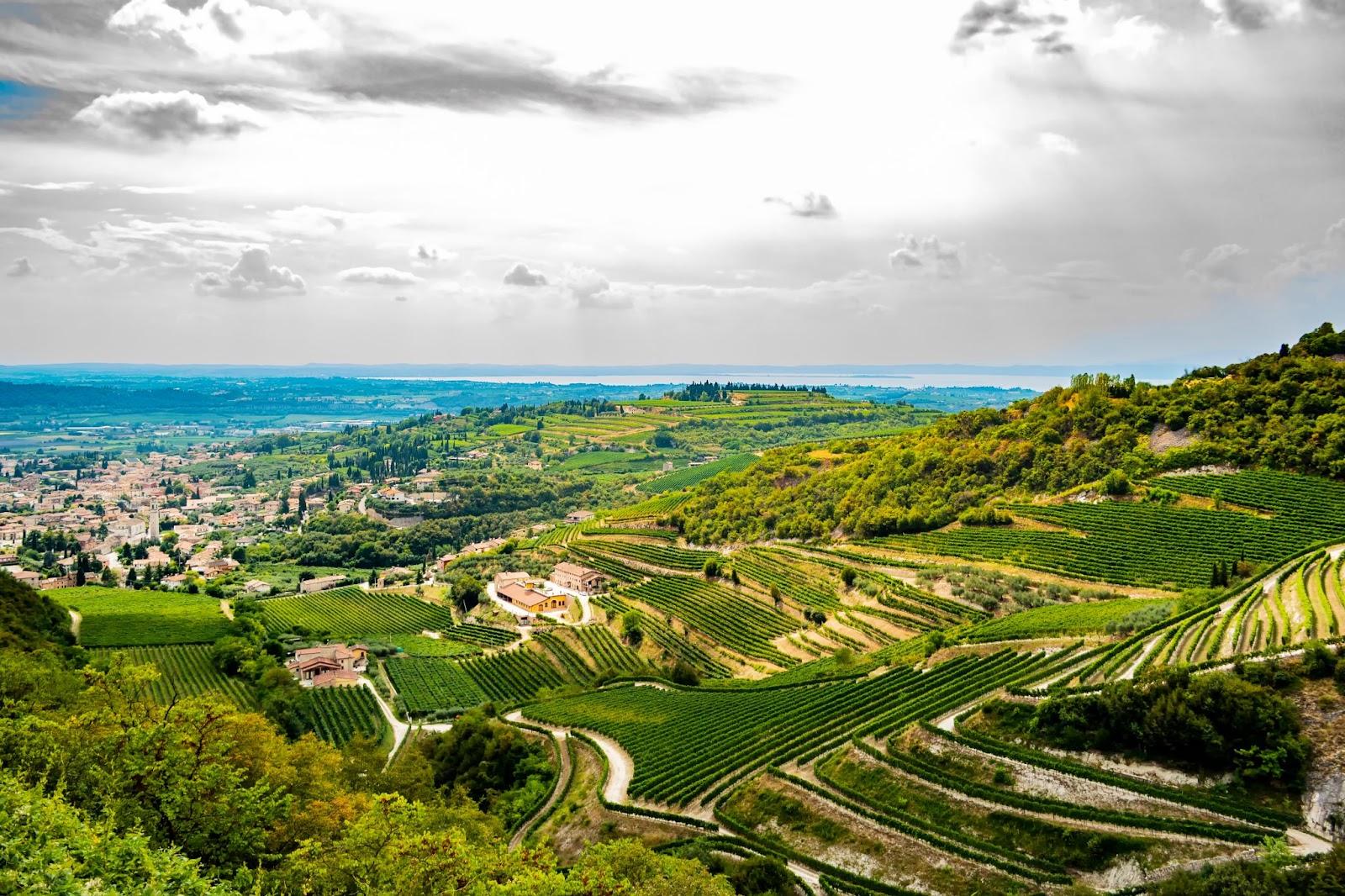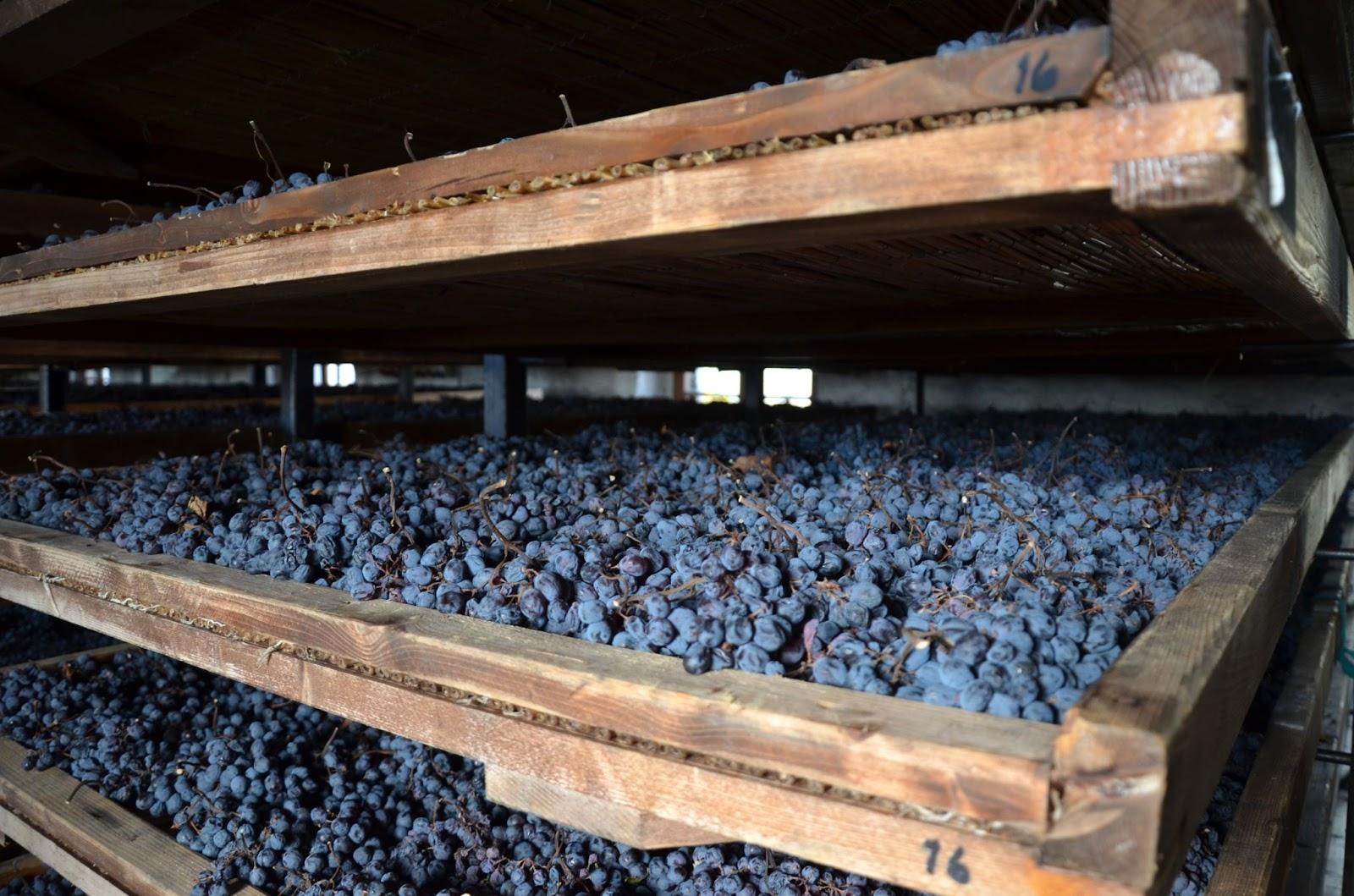- Wine Color/Type
- Top Occasions
- Unique Wines
- Surprise Me!
Valpolicella — The Northern King of Wine
The subregion of the Veneto region, Valpolicella, stands as one of the most underrated and overlooked wine regions, despite its association with one of the five wine kings, Amarone. While its fame is undeniable, Valpolicella wines often find themselves underestimated by wine professionals yet loved by many wine enthusiasts for their exceptional value and longevity, ranging from dry to sweet styles.
The region of Valpolicella offers beautiful landscapes, like here from San Giorgo. (Photo: REDMASON/stock.adobe.com)
The name "Valpolicella" is believed to originate from Latin and ancient Greek, translating to "valley of many cellars." This moniker holds true, as the region offers a diverse array of styles, wineries, and producers, ranging from large-scale operations to boutique establishments. Its reputation for consistently producing high-quality wines further underscores this claim.
Located in the northern region of Italy's Veneto, Valpolicella lies at the foothills of the Alps, eastward from the holiday destination of Lake Garda. Its soils, rich in limestone and clay, lend themselves to a more fertile environment, contributing to the region's large output of high-quality wine. The region spans about 35 km from west to east and 12 km from north to south, and shares its borders with neighboring appellations such as Bardolino, Custoza, and Soave.
A Region with Many Facets
The region's notable wines include Valpolicella, Valpolicella Superiore, Ripasso, Amarone della Valpolicella Classico DOCG, and the sweet dessert wine Recioto.
The primary grape variety in this region is the lesser-known Corvina, which is often blended with Rondinella, Corvinone, and Molinara. While there are a few other varieties present, they play a less significant role.
By law, Valpolicella wines must contain between 45-95% Corvina, with the other grape varieties playing a supporting role in enhancing color, acidity, and texture. Corvinone can also serve as a substitute for Corvina, comprising up to 50% of the total blend.
Valpolicella and its Superiore designation represent the standard wines of the region. Following traditional winemaking practices, grapes are harvested, crushed, and subjected to a maceration process during fermentation. Subsequently, they undergo maturation either in stainless steel vessels or oak before being released to the market. Some wine producers prefer to mature their wines in Slavonian oak.
These wines are characterized by their dryness, moderate body, and pronounced tannins, offering aromas of red cherries, black pepper, and dried herbs.
The other styles in Valpolicella diverge from the standard winemaking process. Legend has it that in 1936, a winemaker at Cantina Negrar accidentally allowed the sweet Recioto wine to ferment until dry. The result was a powerful wine with high alcohol content and a rich, voluptuous body.
This "mistake" gave birth to a new category of wine known as "Amarone," also known as the "great bitter." The first bottles entered the market in 1953, labeled as "Recioto Amarone della Valpolicella."
By 1990, it had earned DOC status, and in 2010, it was awarded the highest status in the Italian wine hierarchy, DOCG. Today, Amarone della Valpolicella stands as one of Italy's most important and significant wines. Some wine lovers refer to it as the “King of the North”.
Unique Production
The winemaking techniques for Valpolicella Ripasso and Amarone wines in Valpolicella are truly unique. Winemakers begin by hand-harvesting the grapes, which are then carefully laid out on mats in well-ventilated drying rooms. Regular turning of the grapes is essential to prevent the proliferation of spoilage bacteria, which could impart undesirable aromas reminiscent of glue or nail polish. During this drying process, the grapes lose moisture, resulting in concentrated aromas and sugars within the grapes, ultimately leading to higher alcohol levels and intensified fruity flavors in the wine.
Following the drying process, the grapes are crushed and undergo maceration with the skins, initiating fermentation. The resulting wine typically reaches alcohol levels of around 15% ABV, sometimes even reaching 16.5-17% ABV, highlighting its robust style. Maturation then occurs in large or small oak vessels for a minimum of two years, contributing to a broader body and smoother tannins. New oak barrels can impart complexity with notes of vanilla and spice, while older oak barrels offer a more restrained aroma.
The grapes are dried during the “appassimento” process. (Photo: Massimo Beccegato/stock.adobe.com)
Conversely, the fermentation process for Recioto wines is halted when the alcohol level reaches about 13-14.5% ABV, resulting in a final residual sugar content of 120-180 g/L. Recioto is also produced in a white version. The reds offer a harmonious balance between residual sugar and tannins, providing a delightful savory / sweet experience.
The production of Ripasso wines involves a more intricate process. Winemakers take the skins and pulp leftover from Amarone or Ripasso wine and add them to basic Valpolicella wine. This mixture undergoes a second fermentation, extracting more color, tannins, and flavor from the skins and pulp, resulting in a wine of increased intensity. Ripasso wines are typically aged in either stainless steel or oak, offering a middle ground between the moderate-bodied Valpolicella and the full-bodied Amarone, often providing exceptional value for wine enthusiasts.
Peter Douglas
Here are some of our wine recommendations. The high ABV-wines taste best, when they are slightly chilled. Enjoy exploring and discovering the excellent wines of Valpolicella.
[insert:wine:corte-sant-alda-ca-fiui-valpolicella-2020]
[insert:wine:zenato-ripassa-valpolicella-ripasso-superiore-2019]
[insert:wine:bolla-amarone-della-valpolicella-classico-2017]
[insert:wine:cantina-di-negrar-amarone-della-valpolicellaclassico-2018]
[insert:wine:bussola-recioto-della-valpolicella-classico-2017]
Latest articles


